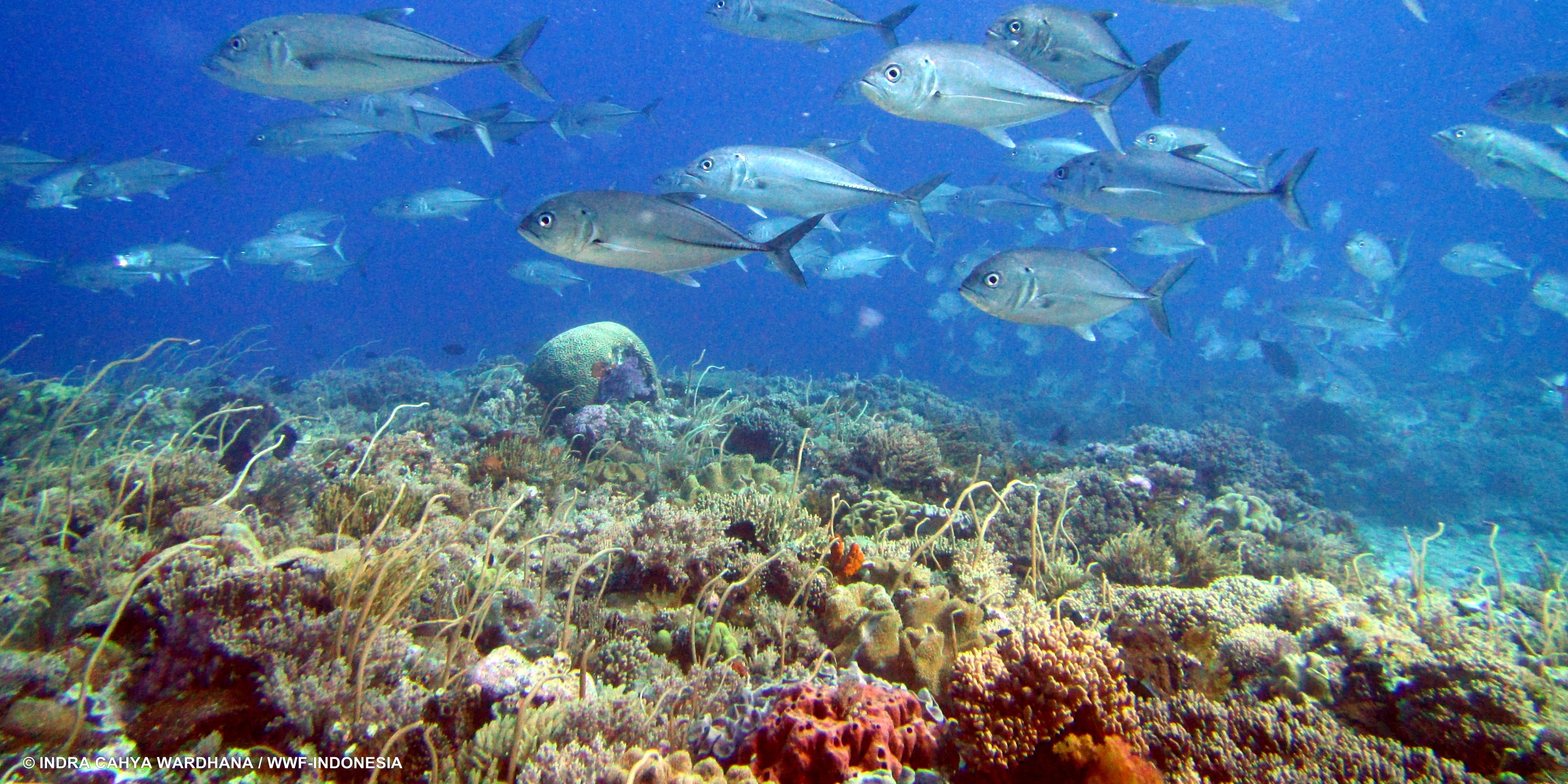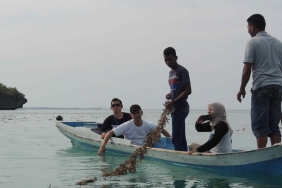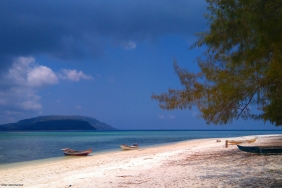#XPDCMBD NOTES: TOMRA VILLAGE AND NUWEWANG VILLAGE
Author: Nara Wisesa (WWF-Indonesia)
In the morning, Nara (WWF-Indonesia) and Kris (DKP Maluku Barat Daya) went ashore first to report to the Tomra Village Head and Syahbandar on Leti Island. The village head authorized the Sea Team to conduct ecological data collection and the Land Team to collect data through focus group discussions and key informant interviews at the Village Hall in the afternoon.
Before the #XPDCMBD Team went to the field, they were visited by a Tomra Base Navy staff on board the Seven Seas for a safety check of the ship, crew and passengers. After lunch time, the Land Team immediately left for Tomra Village. Upon arrival, as usual, the team was divided into two groups. Team A did the Tomra Village data collection and Team B - who immediately departed by motorcycle taxi - took social and fisheries data in Nuwewang Village.
Team A was welcomed by the village head, followed by several villagers 30 minutes later. Before starting the focus group discussion, Team A was informed about the problems faced by this village, one of which is the lack of fuel. Although limited, the existing stock is sold at a relatively low price of around IDR 12,500 per liter.
After finishing the conversation and conducting a focus group discussion, it is known that the lives of Tomra Village fishermen used to be very dependent on natural conditions. However, with the help of fishing gear and boats from the Southwest Maluku Regency Government, the pattern of natural resource utilization has changed. Now, to meet the needs of market demand from the regency for fish products, local villagers are no longer too dependent on the season.
Meanwhile in Nuwewang Village, Team B had a unique story. While conducting a focus group discussion, a 95-year-old woman was present during the activity and was quite active in expressing her opinions. However, because she was too old, her voice and language were not well understood by the team, so the data obtained from her was still relatively minimal.
During the discussion, Team B obtained some important information, one of which was that the fishing pattern in Nuwewang Village was similar to the villages visited by the Land Team when collecting data on Moa Island. When doing 'bameti', the women in Nuwewang Village also take 'bia', a type of snail or sea snail; and small fish such as anchovies or puri, using a thin net.
In addition, it is also known that there are ten fishing groups in Nuwewang Village, each with about six members. Each group has a FAD to catch kite fish, or 'momar' in the local language. Most of the fish sold, including large reef fish, in Tiakur also come from Nuwewang village.
In the past, in the western waters of Leti Island, there were many large fishing boats from the Banda Sea that took shelter there during the strong wind season. Now there are no more, since the ban on the operation of trawlers. Positively, this has made village fishermen get more skipjack catches, especially when using FADs, they can catch twice a day. An ice factory is also under construction in Nuwewang by investors from East Java. The existence of this ice factory can later support market access for the Leti community.
Sasi for lola, sea cucumber, and batulaga also applies until now. The last harvest was about two years ago and produced about ten tons of lola skin, six tons of sea cucumber, and one ton of batulaga skin. Not only that, lobster is also subject to sasi. People can only catch in the petuanan area and only residents of neighboring villages are allowed to enter from outside the village.





